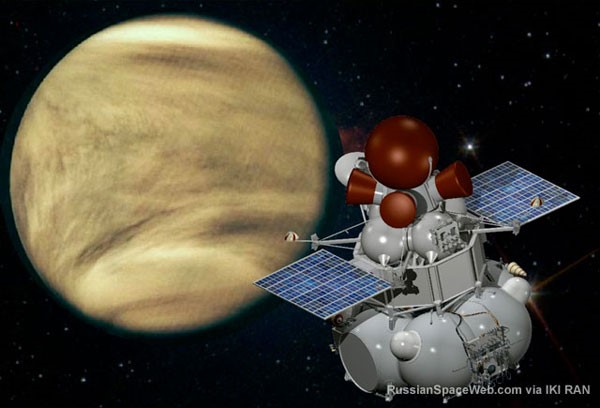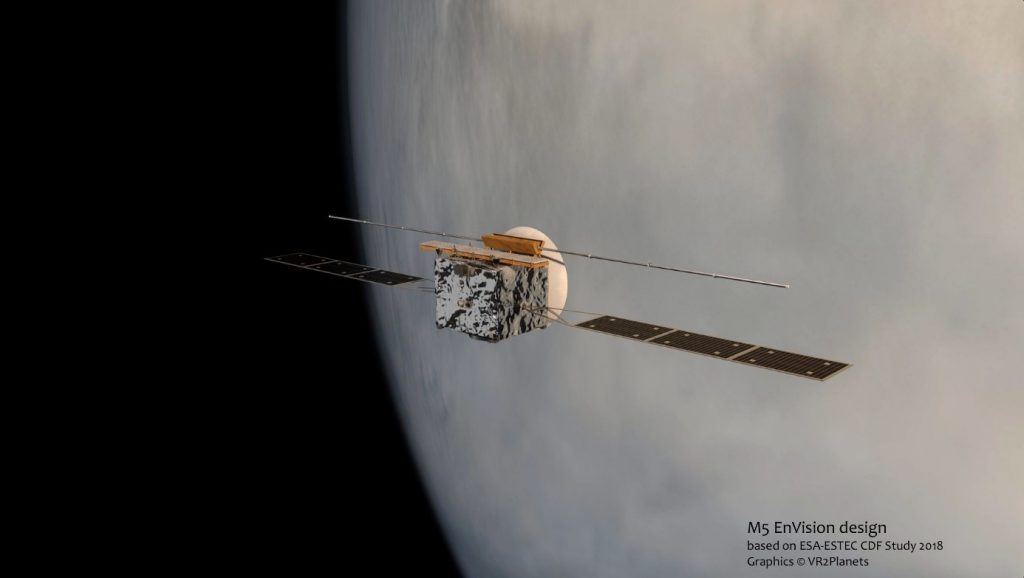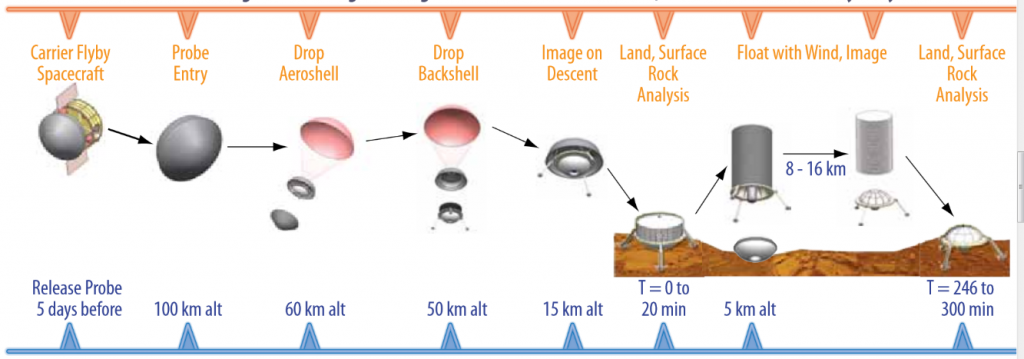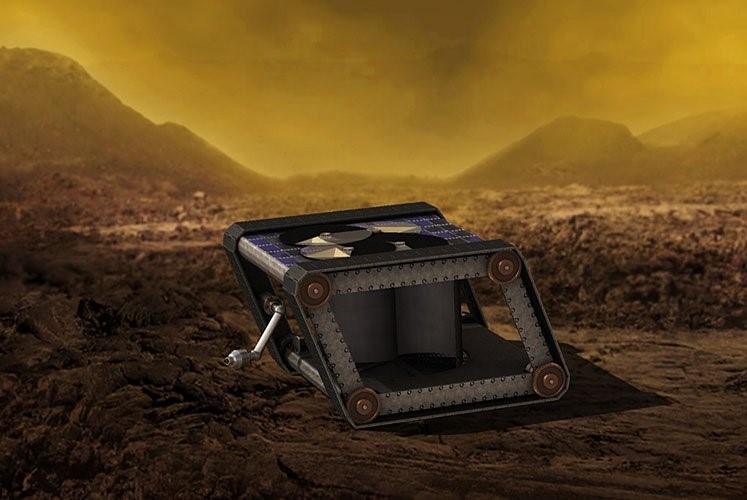At present, few Venusian missions are actually in development and funded. Nevertheless, several projects are under consideration or seeking funding.
Venera D
The Russian mission called Venera D, a project that dates back to 2003, is continually postponed. This mission, logically attributed to Lavotckin, aims to revive the success of the Soviet Venera programme. Mission plans change regularly but should include an orbiter capable of operating for at least two years. A lander that is to survive from 1 to 24 hours is also under consideration with a potential partnership with Nasa. The presence of atmospheric balloons is less clear. Some plans do not include any, while others plan to carry two 150 kg and four smaller ones. This mission is particularly open to international cooperation with proposals from American landers, French balloons and German instruments. Despite these potential partnerships, the mission that was originally scheduled to take off on a Proton in 2013 has fallen behind. The launcher will already be removed from service before the launch of Venera D and should therefore be launched by an Angara 5. Since the project is not included in the Russian funding plan for 2016-2025, the mission will not be able to take place until at least 2027 and more likely 2031 provided there are budgets allocated.

Shukrayaan-1
Indian Space Research Organization (ISRO) recently embarked on a far-distance exploration program with undeniable success. two lunar orbiter and a Martian orbiter that fulfilled their mission despite a much lower budget than their equivalent in other countries.
The only exploration program failure is the crash of a lunar lander in 2019. For futur, a second Mars mission is planned for 2022. A Venusian mission called Shukrayaan-1 (which can be translated by Venusian vehicle) is planned for 2023. This mission must include an orbiter and must, in a way, take over from Akatsuki. For this, the Indian teams exchange with JAXA. She also benefits from contacts with the european teams who worked on Venus Express to take advantage of the experience gained at the end of the mission on air-braking. It is also possible that this mission will carry atmospheric balloons following the proposal of the French researcher Jacques Blamont who is the originator of the Vega probe balloons.
Envision
EnVision is a European mission project that is a finalist (with two telescopes) for selection in 2021 and a planned launch around 2032. It presents itself as a greatly modernized version of Magellan. It mainly has radar instruments that can map the planet more accurately than during the 1990s. With a resolution of less than one metre and regular passages, it is possible to detect ground deformations that would be evidence of geological activity. Some regions, such as Venera lander drop-off points, would be particularly scrutinized in order to learn from the comparison between in-situ and orbital radar measurements. Comparison between two passages in specific areas would allow the analysis of topographical changes and follow movements below the surface. A radar should also be able to probe the first 100 meters of surface and thus better understand the geology of the planet.

Proposed U.S. missions
A large number of missions to Venus have been proposed to the NASA selection committee for the discovery, new fronteirs and flagship programs. At present, none of them have been selected and it would be too long to list all the projects that have been submitted, are under consideration, or should be represented. You can still see the different objectives that affect the architecture of the mission. Missions to study the morphology and geological history of Venus use radar orbiters such as EnVision. Atmospheric research also uses orbiters but also a large number of Pioneer-type atmospheric probes and/or balloons that would prolong observation. Finally, geological and geochemical missions mainly include landers that must study one or more landing sites in detail. Some would allow deep measurements of rocks to study the environment at the time of their formation.

At the same time, various U.S. companies and Nasa center are conducting research to develop new technologies that can be used on Venus. For the study of the atmosphere, the most emblematic projects are solar drone projects operating at high altitudes or drone/air hybrids that can explore the cloud area. Less spectacularly, Nasa is working on balloons that can change altitudes to surf the winds. On the surface, various cooling and isolation systems are being studied to allow future landers to survive longer on the surface. Research is also being done in the field of high-temperature electronics or fully mechanical rovers to make them less sensitive to surface conditions.
